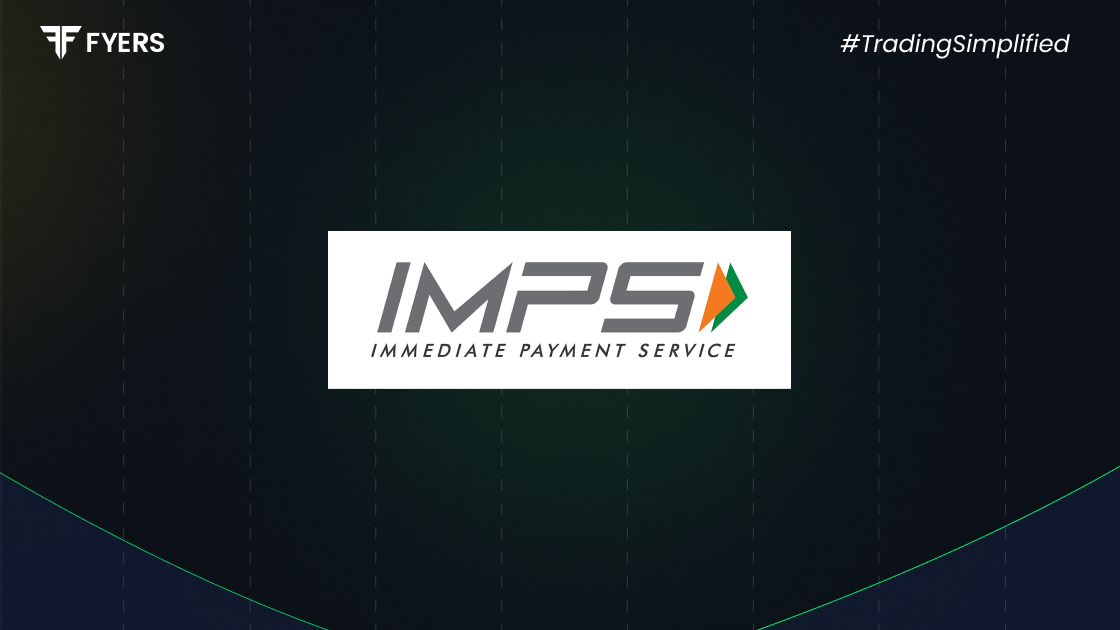

 20 Jul, 2025
20 Jul, 2025
 5 mins read
5 mins read

With the rise of digital banking, transferring money has become faster and more convenient than ever. One such innovation that has transformed fund transfers in India is the Immediate Payment Service (IMPS). Whether you want to pay your utility bills, transfer money to family, or make a business payment, IMPS offers a secure and instant solution.
In this blog, we'll explain what IMPS is, how it works, its features, limits, charges, and what to consider before using the service.
Think of IMPS as the original high‑speed highway for digital payments: you can drive on it via mobile banking, internet banking, ATMs, SMS or USSD by entering an account number + IFSC (or mobile number + MMID). UPI is more like a sleek new express lane layered on top of that highway. It lets you zip along using a simple “@” handle (a Virtual Payment Address), supports “pull” requests for merchant payments, and rarely attracts fees for small transfers.
In short:
|
Aspect |
IMPS |
UPI |
|---|---|---|
|
Launch year |
2010 |
2016 |
|
Backbone |
Operated directly by NPCI |
Built on IMPS infrastructure |
|
Identifier used |
Account + IFSC or mobile + MMID |
Virtual Payment Address (e.g. name@bank) |
|
Access modes |
Mobile/Internet banking, ATMs, SMS, USSD |
Smartphone apps (Google Pay, PhonePe, BHIM, etc.) |
|
Typical limit |
Up to ₹2 lakh/transaction (higher for some accounts) |
Up to ₹1 lakh/transaction (₹2 lakh for some banks/merchants) |
|
Charges |
Often ₹0–₹20, varies by bank (plus GST) |
Usually free for retail users; merchant fees vary |
So, if you’re using UPI today, you’re already benefiting from the foundation laid by IMPS. That said, IMPS still has its own role - especially for those who prefer traditional mobile or net banking over third-party apps.
There are plenty of reasons why IMPS has become a favourite for quick transactions. Here are some key IMPS features:
Always Available: IMPS works round the clock - yes, even at midnight on Diwali!
Instant Transfers: The money reaches the recipient’s account in seconds.
Multiple Ways to Use: Accessible through mobile apps, internet banking, ATMs, SMS, and even USSD codes.
Bank-Wide Access: Supported by almost every major bank in India.
Safe & Secure: Strong encryption and authentication methods keep your money safe.
Wondering how to use IMPS for your next transfer? It’s quick and simple, and the process is quite similar across platforms.
Via Mobile Banking App
Log in to your banking app.
Choose the IMPS option under fund transfers.
Enter recipient’s mobile number and MMID or their account number and IFSC.
Input the amount and confirm.
Via Internet Banking
Log in to your bank’s website.
Go to ‘Fund Transfer’ > IMPS.
Add or select the beneficiary and follow the steps to complete the payment.
Via ATM
Insert your card and select the IMPS option.
Provide the necessary details and authorise the payment.
Via SMS or USSD
Some banks let you initiate IMPS transfer via SMS or by dialling *99#.
Follow the menu options to complete your IMPS money transfer.
Let’s talk about IMPS charges and how much you can send.
|
Transaction Amount |
Typical IMPS Charges |
|---|---|
|
Up to ₹1,000 |
₹0 to ₹5 |
|
₹1,001 – ₹10,000 |
₹2.5 to ₹5 |
|
₹10,001 – ₹1 Lakh |
₹5 to ₹10 |
|
₹1 Lakh – ₹2 Lakhs |
₹10 to ₹20 |
Note: These fees vary by bank, and GST may apply. Many banks also waive charges to encourage digital payments.
Understanding the IMPS transaction limit is important before sending large amounts.
Minimum Transfer: ₹1
Maximum Per Transaction: Usually ₹2 lakhs via mobile or online banking
Daily Limit: Depends on your bank's policies - some may allow higher limits for business or premium accounts
IMPS Timings: It’s always on - 24 hours a day, 365 days a year
Why should you choose IMPS over other options? Here are some great IMPS benefits:
Speed: Instant transfers save you from delays.
Convenience: Use it through apps, ATMs, or even SMS - no need to visit a bank.
Round-the-Clock Access: Ideal for emergencies and off-hour payments.
Low or No Fees: Many banks offer IMPS at little to no cost.
High Security: Strong encryption, OTPs, and login verification protect your transaction.
Before you hit ‘send’, here are a few quick tips:
Double-check details: Errors in account number or IFSC code could misdirect funds.
Know your limits: Be aware of your bank’s IMPS transaction limit and daily cap.
Charges: Some banks still apply fees for higher-value transactions.
Internet required: For mobile or online banking, a good connection is a must.
IMPS has changed the way we send and receive money in India. With its instant processing, 24x7 availability, and multiple access modes, it’s one of the most efficient digital payment services around. Whether you’re paying for groceries or sending money to a loved one, IMPS offers speed, ease, and security.
Just be sure to check your bank’s limits and charges - and you’re good to go.
IMPS stands for Immediate Payment Service.
Most banks allow up to ₹2 lakhs per day, but limits may vary.
The usual cap is ₹2 lakhs per transaction for mobile and internet banking users, though some banks may offer higher limits.
Yes. IMPS follows NPCI’s strict safety guidelines and uses encryption, OTPs, and secure logins to keep your money safe.
Calculate your Net P&L after deducting all the charges like Tax, Brokerage, etc.
Find your required margin.
Calculate the average price you paid for a stock and determine your total cost.
Estimate your investment growth. Calculate potential returns on one-time investments.
Forecast your investment returns. Understand potential growth with regular contributions.